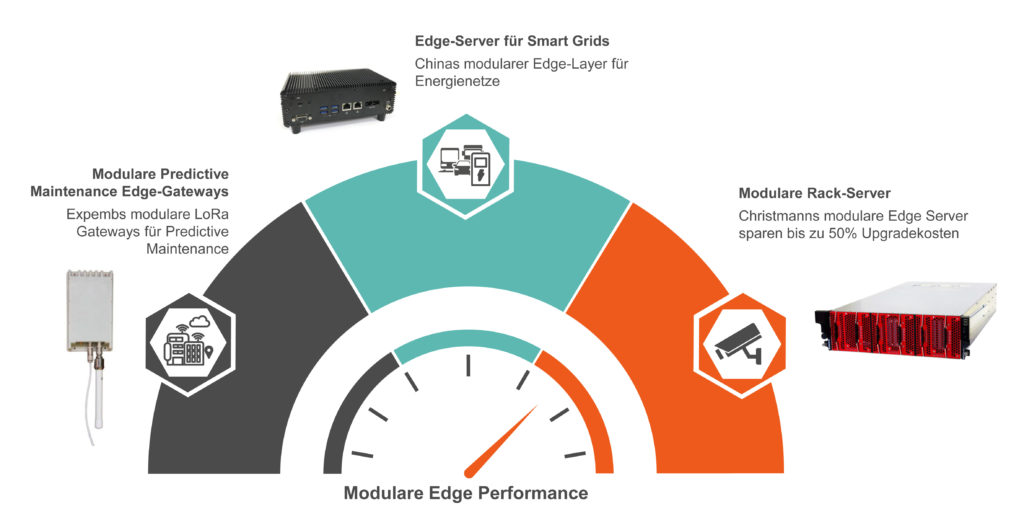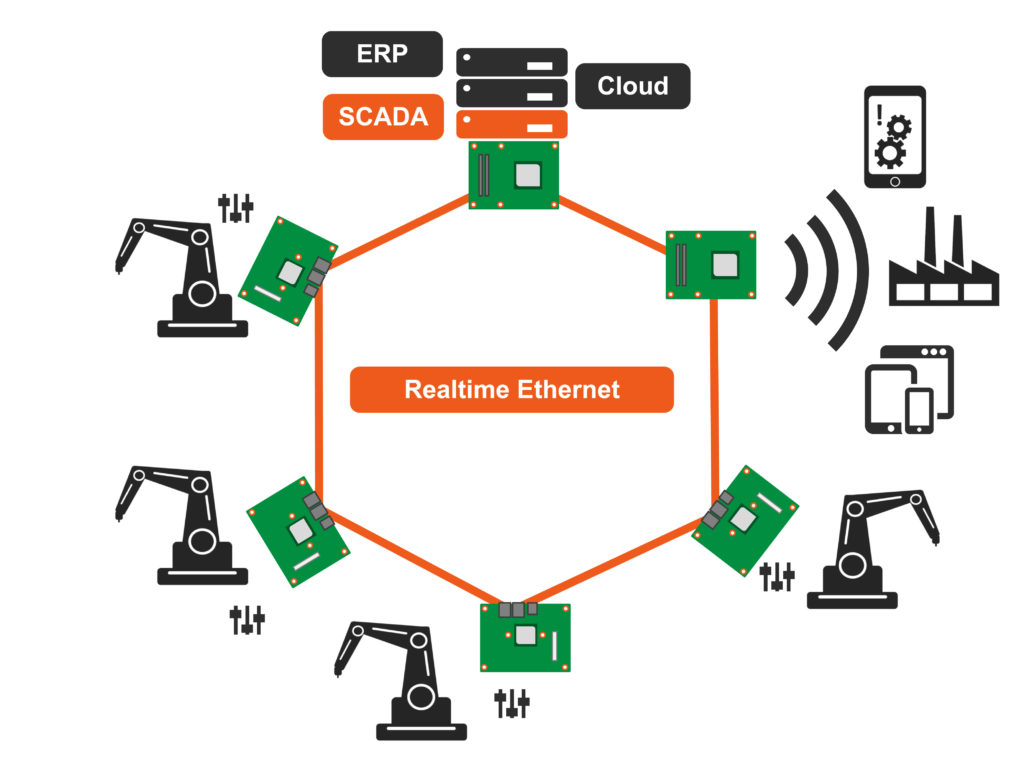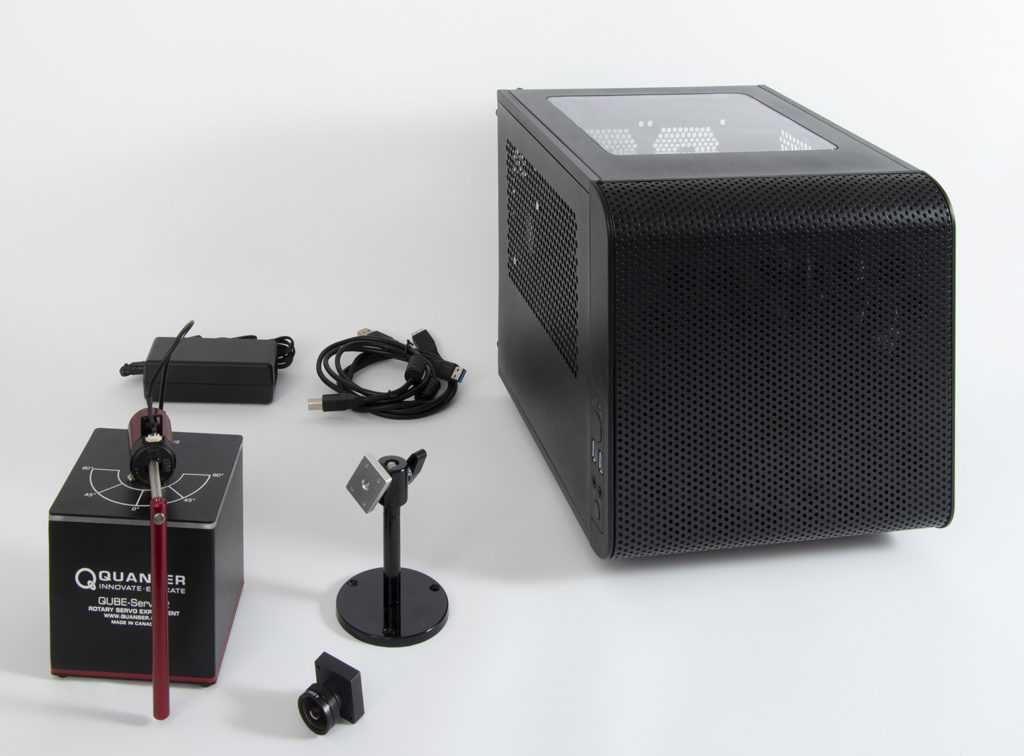By Dan Demers, congatec
Industrial edge server designs must be flexible to perform diverse tasks. Increasingly, virtual machines are used to consolidate a variety of Industry 4.0 workloads. In addition, Computer-on-Modules offer the flexibility to scale the computing power to fit the application, enabling application-specific price and performance balancing next to load balancing.
Workload consolidation, which was mainly reserved to data center server virtualization in the past, has long ceased to be confined to well-conditioned server cabinets. Demand is now increasing at the rough industrial edge: Machine and systems manufacturers as well as industrial end users want to virtualize their Industry 4.0 applications on local edge servers. At the same time, they also want to consolidate the various controls distributed across a manufacturing cell on these edge servers instead of assigning the control tasks to multiple dedicated systems. Such an approach makes it possible to use the combined computing performance better, which ultimately saves costs.
Next to system costs, the maintenance and administration efforts are also reduced. What is more, workload consolidation on redundantly designed edge and fog servers also helps to increase reliability and fail-safety. This is because with multiple distributed systems, there is a higher probability that a link in the chain, and therefore the entire chain, will fail. To be able to develop heterogeneous and application-specific edge and fog servers, OEMs need a powerful real-time hypervisor as well as a multicore platform that’s right for the particular application. Since it doesn’t tend to make a difference on which server platform the hypervisor runs, a modular hardware design is the first step to enable application-specific price and performance balancing in addition to load balancing. Such a modular hardware approach can already be found in numerous edge systems, from the smallest gateways to large industrial servers.

Fully modular edge and fog servers offer real-time hypervisor support and are based on Server-on-Modules to enable application-specific price and performance balancing in addition to load balancing.
LPWAN gateway for LoRa
A good example from the low-power segment is the LoRa gateway from Expemb. Designed for use in a variety of LoRa scenarios, it allows the implementation of an equally wide variety of edge logic. For example, in factory environments LoRa is used to connect autonomous smart IoT sensors or track load carriers to monitor and optimize the internal flow of goods. Because the gateway integrates Computer-on-Modules – in this case, Qseven modules with Intel Atom processors – it offers a flexible hardware setup that can be customized both on the hardware and the software side to meet the most heterogeneous technical requirements for LoRa-based IoT applications. Next to load balancing, this makes application-specific price and performance balancing possible, too.
Edge servers for smart grids
High flexibility is also required for box PC-like edge servers. China, for example, is currently rolling out an edge layer for a distributed smart grid management system in cooperation with Tencent’s IoT partner for the energy market. An edge server design of this kind should manage distributed power generators and consumers in factories and industrial parks, and since the installed base is always heterogeneous, the hardware design should also be modular. In this case, COM Express Type 7 Computer-on-Modules are used. First systems integrate modules with Intel Xeon D15xx processors with up to 16 cores and 32 threads. Alternative configurations are based on Intel Atom C3xxx processors. With up to 16 cores, these processors are ideal for all installations where diverse workloads must be consolidated. Obviously, it makes a significant difference both in terms of energy consumption and cost whether the system uses a Xeon or Atom processor.

A number of manufacturers have already built innovative modular edge server systems, from small LoRa gateways to smart grid edge servers and industrial rack servers.
Modular rack servers for harsh environments
It is, of course, also possible to build more powerful modular rack server designs that use standard Computer-on-Modules to reduce investment costs for the control of robotic systems, production cells as well as complex packaging and machine tools. An example of such modular designs are servers from suppliers such as Christmann, which has successfully integrated COM Express Type 7 Server-on-Modules and is already planning designs based on the new COM-HPC module standard. Next to providing the perfect design basis for the specific task, what speaks in these servers’ favor is the high scalability that enables performance upgrades for future needs: The second server generation, which will doubtlessly be required after three to five years due to rapid technological progress, is expected to cost only roughly half of the initial investment. This is because in most cases all that will need replacing is the processor module. To fully leverage the significant TCO savings this yields, Christmann rackmount servers can be flexibly equipped with up to 27 CPU microservers. These three examples illustrate the enormous advantages that Computer-on-Modules and Server-on-Modules offer for edge gateways and edge servers.

Real-time workload consolidation kit
But without real-time hypervisor support, this is only half the solution. It is also necessary to provide appropriate software support for the hardware. For this purpose, congatec cooperated with Intel and Real-Time Systems to develop an Intel certified RFP (ready for production) kit for workload consolidation. The kit, Intel certified since March 2020, is aimed at the next generation of image-based collaborative robotics, automation controllers and autonomous vehicles that need to perform multiple tasks in parallel, including situational awareness using deep-learning based AI algorithms. The solution-ready platform is based on a COM Express Type 6 module with Intel Xeon E2 processor and integrates three preconfigured virtual machines to demonstrate that it is possible to run real-time applications on a virtual machine even while another system application is being rebooted. But to ensure that the platform is future proof and able to support workload consolidation most efficiently, it also provides all the basics needed for flexible connectivity via customer-specific carrier board designs.

The real-time workload consolidation starter kit from congatec is based on a COM Express Type 6 module with Intel Xeon E2 processor and the RTS Hypervisor from Real-Time Systems. (Copyright Intel)
Time-sensitive networking support included
The kit supports time-sensitive networking (TSN), which is becoming essential for real-time processing in tactile Internet environments with the emergence of 5G technologies and 10+ GbE networks in the factory. TSN technology comprises a number of standards, such as IEEE 802.1q for virtual LANs over Ethernet, time aware shaping (TAS) as standardized in IEEE 802.1Qbv for guaranteed minimum transmission latency, or real-time synchronization via the precision time protocol (PTP) defined in IEEE 1588. PTP is responsible for time synchronization between nodes. A master sets the time. The individual slaves synchronize their clocks with two-digit nanosecond accuracy. Based on these synchronized clocks, packets can be time stamped and sent. This means PTP networks can synchronize themselves with two-digit nanosecond accuracy, whereby the travel time of the IP packets naturally also impacts the ultimate real-time behavior of the application. In case of the I219 Intel Ethernet interface, the clock synchronization is based 100% on this standard component. This gives it the dual advantage of being cast in hardware and not requiring any additional proprietary applications or dedicated hardware.
congatec
www.congatec.com
Filed Under: IoT • IIoT • Internet of things • Industry 4.0




